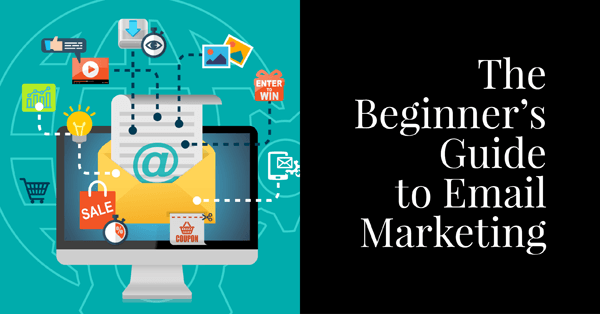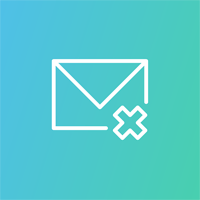The Beginner's Guide to Email Marketing

If you have an e-mail address-and 89 percent of Americans check their email once a day-odds are you have been the target of email marketing.
Those recommendation emails from Amazon? Or that reminder from one of your favorite brands that Christmas is coming? These are the end result of carefully thought out and executed email marketing campaigns. A customer email address is one of the most important assets a successful marketer can obtain. According to the Direct Marketing Association, for every dollar a company spends on email marketing, they get a 40 dollar return on investment (ROI). That's an ROI of 4,000 percent! No other marketing channel comes close to delivering that rate of return.
So how can you put the power of email marketing to work for your business? It's simple. Just upload your customer email addresses to your email service provider's database and blast away. Right? Wrong.
Smart email marketers know there's more to it than that. Let's take a look at the ways you can build a successful and relevant (to your customers) email marketing strategy. Your customers and your bottom line will thank you for it.

Build Your List
Before you can launch any email marketing campaign, you need one thing-a customer email address. Preferably hundreds or thousands of them. If you already have an existing subscriber database, all the better. If you don't, now is the time to build one.
Building an email subscriber list is easy if you already have customers that have ordered from you online. Culling the email addresses from existing customer records is always a great place to start. If you're just starting up-or for example, you have a brick-and-mortar shop and are just getting your feet wet with your online business-you'll need to get creative.
Reward visitors to your landing page with something of value to them. A good example of this is a downloadable e-book or an online course that is only accessible once they give you their email address.
If you're a brick and mortar establishment, consider putting out a guest book, and encourage your clients to leave their email address.
Can Your Spam
One of the most important steps any would-be email marketer can take is to do everything they can to make sure their emails aren't flagged as spam. It's not only an email marketing best practice, it's the law.
The Can-Spam act imposes harsh penalties on businesses that found to be in violation-up to $40,654 per separate email!
Even if you don't run afoul of the law, chances are if your emails are ending up in your customer's spam folder, they'll never see them. All of that hard work for nothing. So what can you do to avoid the spam-box?
Here are three tactics to help you avoid the blacklist:
- Don't use deceptive subject lines. The content of your email should be accurately summarized in the subject line.
- Include a postal address-this is required by law.
- Make it easy for customers to unsubscribe. While this may seem counter-intuitive, it is a good thing when customers who don't want to receive your emails unsubscribe from your list. They aren't reading your emails anyways. Having an active list of engaged subscribers is much more valuable than having a bloated list full of people who trash your messages.
- Once a subscriber asks to unsubscribe, you must stop sending them emails within 30 days.
Beyond complying with the law regarding commercial emails, consider also:
- Personalization - Personalizing your emails isn't only smart from a marketing perspective, it can also help you beat the spam filters. Using the name of the person you're emailing in the subject line can help ensure your email gets opened and that it makes it to the inbox in the first place.
- Legitimate subscribers - When it comes to email subscriber lists, bigger isn't always better. Make sure everyone who receives your marketing emails opted-in voluntarily. Avoid the temptation to quickly grow your database by buying subscriber lists. Not only is it bad practice to spam people who haven't subscribed personally, it can affect whether your real subscribers see your mail.
Your sender score-somewhat like a credit score for email marketers-will be adversely affected by metrics like a poor opening rate and having email marked as spam by the recipient. Due to these and other factors, approximately 26 percent of emails sent worldwide never reach their intended inbox.

First Impressions - Subject Lines and Pre-Headers
If you've followed the steps outlined above, there's a good chance that your email will reach your target's inbox. It should go without saying that the content of your email is important, but before we even get to that, the goal is to get your lead to open the email in the first place.
When meeting someone, it's estimated that you only have seven seconds to create either a good or bad impression. With email, it may be even less. Forty-seven percent of email recipients open email based on the subject line alone. Sixty-nine percent of email recipients report email as spam based solely on the subject line. Those are some pretty staggering statistics.
Treat these number as a challenge. You need to get the point of your email across in the subject line, or at least entice the recipient to click open. Consider your subject line the "headline" for the content of your email. Do some research on what constitutes a compelling and successful subject line.
In addition to the subject line, many email marketing platforms allow you to set the "pre-header." This is another opportunity to lure your subscriber to click "open." Here's an example from Brooks Running shoes, as viewed in Gmail:  The pre-header is the text that occurs just after the subject line. As you can see, this is another great place to get your point across.
The pre-header is the text that occurs just after the subject line. As you can see, this is another great place to get your point across.
Above-the-Fold
We've talked about "headlines" and we're now going to borrow another term from the newspaper industry. "Above-the-fold" literally means the content of a newspaper visible when it is folded in half, typically for display on the newsstand. In email marketing, we use the term to describe the content visible to the subscriber before they have to do any scrolling. This area, typically 250 pixels in height, is a good place for an eye-catching hero image or other content that entices your subscribers to open the email. In many email clients-including Inbox by Gmail and Outlook-the above-the-fold content is displayed in a preview pane before the email is even opened.
Make sure your above-the-fold content is compelling-after the subject line and pre-header, it's the first thing your subscribers will see.
Breaking It Down
Now that you've built your database and you've designed some newsletters using the best practices described above, it's time to take a look at segmentation. Segmentation refers to splitting your email lists based on specific criteria. It's a powerful tool-in 2015, 77 percent of ROI from email came from segmented, targeted or triggered email. We can imagine that number is higher today.
How you segment your list depends largely on what you know about your customers. What information have you gathered from them through surveys and sign-up forms, orders etc? If a customer has placed an order with you previously, chances are you will have quite a bit of data on them. For example, an address, gender and product preference. If they've made multiple purchases, you'll have an even better picture of how they're using your product, and this allows you to tailor content accordingly.
Location is an obvious choice for segmenting your list. If you're sending a winter-themed email, the weather will be very different for a subscriber in New York City to one in Los Angeles. Use whatever data you have available, and think about how you can make your mailings more bespoke and relevant to the recipient.
Spam has given email marketing a bad name in recent years, but it's mostly undeserved. Google, Outlook and other email clients have become good at making sure that spam never makes it into your inbox. It's easier than ever for consumers to ignore emails that have no value to them. That's part of the reason batch-and-blast is no longer a viable marketing strategy. It's too easy for leads to ignore your emails, or worst of all, unsubscribe altogether.
Put the best practices in this article to work for your business:
- Build a list of engaged subscribers.
- Comply with spam regulations and deliverability best practices.
- Create engaging subject "headlines" and pre-headers.
- Put the most relevant and enticing content "above-the-fold."
- Segment your list to deliver the most relevant content to your subscribers.
Even if you're an experienced email marketer, this "beginner's guide" should serve as a reminder to always follow basic best practices in email marketing.
About the Author
 Karl Kangur is the founder and CEO of MRR Media, offering growth solutions for SaaS businesses. Aside from his main business, he has sold many other of his own ventures as well as advising successful companies around the world.
Karl Kangur is the founder and CEO of MRR Media, offering growth solutions for SaaS businesses. Aside from his main business, he has sold many other of his own ventures as well as advising successful companies around the world.









